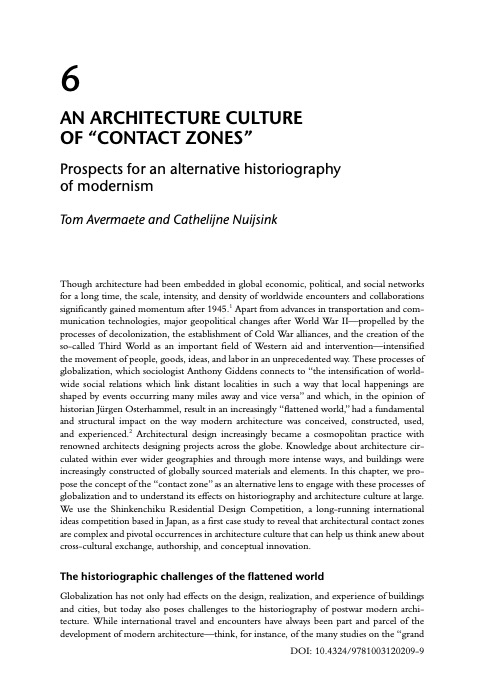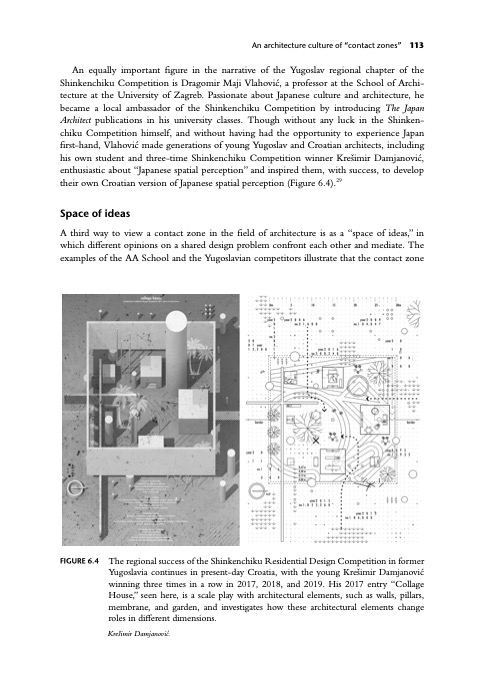An Architecture Culture of Contact Zones: Prospects for an Alternative Historiography of Modernism
Read online here.
This chapter from the book Rethinking Global Modernism fosters a new theoretical framing and corresponding historiography of global modernism through a reorganization of architectural history from the second half of the twentieth century around the concept of cross-cultural “contact zones.” Contact zones—sites of cross-cultural knowledge exchange—offer a conception of architectural development based on global and multidirectional exchanges of knowledge and reframe the history of architectural modernism as a cross-cultural, multi-authored, and poly-conceptual matter. In architectural contact zones (e.g., competitions, exhibitions, congresses, biennales, summer schools) ideas are neither simply exported and imported but bounce back and forth multiple times and undergo a process of cultural negotiation and adaptation.
To illustrate the potential of contact zones as a general applicable historiographic method in the field of architecture, we use as a first case study the Shinkenchiku Residential Design Competition (1965–present). Through elucidating the character and role of this architectural contact zone as a “cultural space,” “social space,” or “space of ideas,’’ this chapter provides a way of thinking anew about cross-cultural exchange, authorship, and conceptual innovation in architecture culture.


